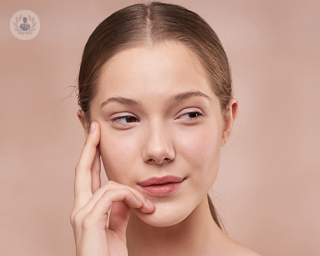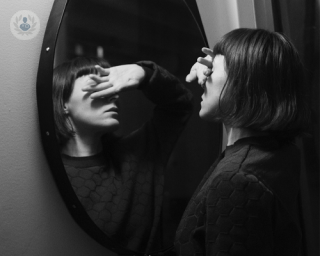Body dysmorphic disorder
What is body dysmorphic disorder?
Body dysmorphic disorder (BDD), also known as body dysmorphia, is a psychological condition where patients fixate on an aspect or aspects of their appearance, seeing flaws or defects that to other people are minor or non-existent.
BDD can affect anyone, but is most common in teenagers and young adults. It is important to understand that it is not the same thing as vanity – body dysmorphia is a mental illness that causes the sufferer to perceive themselves as flawed and exaggerate small details about themselves. It can be distressing, causing further mental health issues, such as anxiety and depression.
What are the symptoms?
People that have BDD often obsess over their appearance, perhaps repeatedly checking themselves in the mirror, grooming the skin, and going out of their way to fix the perceived flaw. Typical symptoms include:
- Comparing your looks with others a lot
- Worrying about a specific part of your body – typically the face (e.g. nose, wrinkles, complexion, acne, etc.), hair, skin, genitalia, breast size (usually women) or muscle size or tone (usually men).
- Going to lengths to cover up perceived flaws, e.g. spending a lot of time picking out clothes, styling hair, putting on make-up, etc.
- Thinking that other people are judging or mocking your appearance
- Avoiding social situations
- A strong belief that you are ugly, or even deformed in some way
- Always looking for reassurance from others about your appearance
- Picking at your skin
BDD can also cause other problems. It is often associated with anxiety, mood disorders, including depression, eating disorders, OCD, and substance abuse.
How do people with body dysmorphia see their body?
Patients see details and it was found in a study by the University of California, Los Angeles (UCLA) that some brain patterns seen in BDD are also obsessive compulsive disorder. However, BDD is probably not a form of OCD because people with OCD tend to recognise their fears and behaviours are excessive, whereas BDD patients are convinced the ugliness perceived in themselves in real.
The study also found that people with this condition have abnormal brain function when it comes to looking at pictures of their own faces. When they viewed themselves in their photographs, patients underutilised parts of the brain used in seeing the face's overall shape and size.
What causes body dysmorphic disorder?
While the causes are not fully understood, it is likely that, like many other mental health issues, body dysmorphia is caused by one or a combination of the following factors:
- Genetics
- Neurochemistry
- Environment/life experiences/culture
Having blood relatives with body dysmorphic disorder increases your chances of developing it, as does the presence of another psychiatric disorder, such as depression or anxiety, or certain personality traits, like being a perfectionist. Negative life experiences, such as bullying, teasing, abuse, and trauma, and societal pressure or expectations of beauty can also trigger BDD.
How is body dysmorphia treated?
It can often be difficult for patients to reach out for help, feeling ashamed or embarrassed, and some patients may not recognise that their problem is a psychological one. However, it's vitally important that sufferers of body dysmorphic disorder receive help. It is recommended that if you think you might have BDD, you should see your GP or a specialist.
If symptoms are mild, cognitive behavioural therapy (CBT) could be recommended. This is a type of talking therapy, either alone or in a group. More severe symptoms could lead the doctor to prescribe medication, such as antidepressants (SSRIs being the most commonly prescribed).









